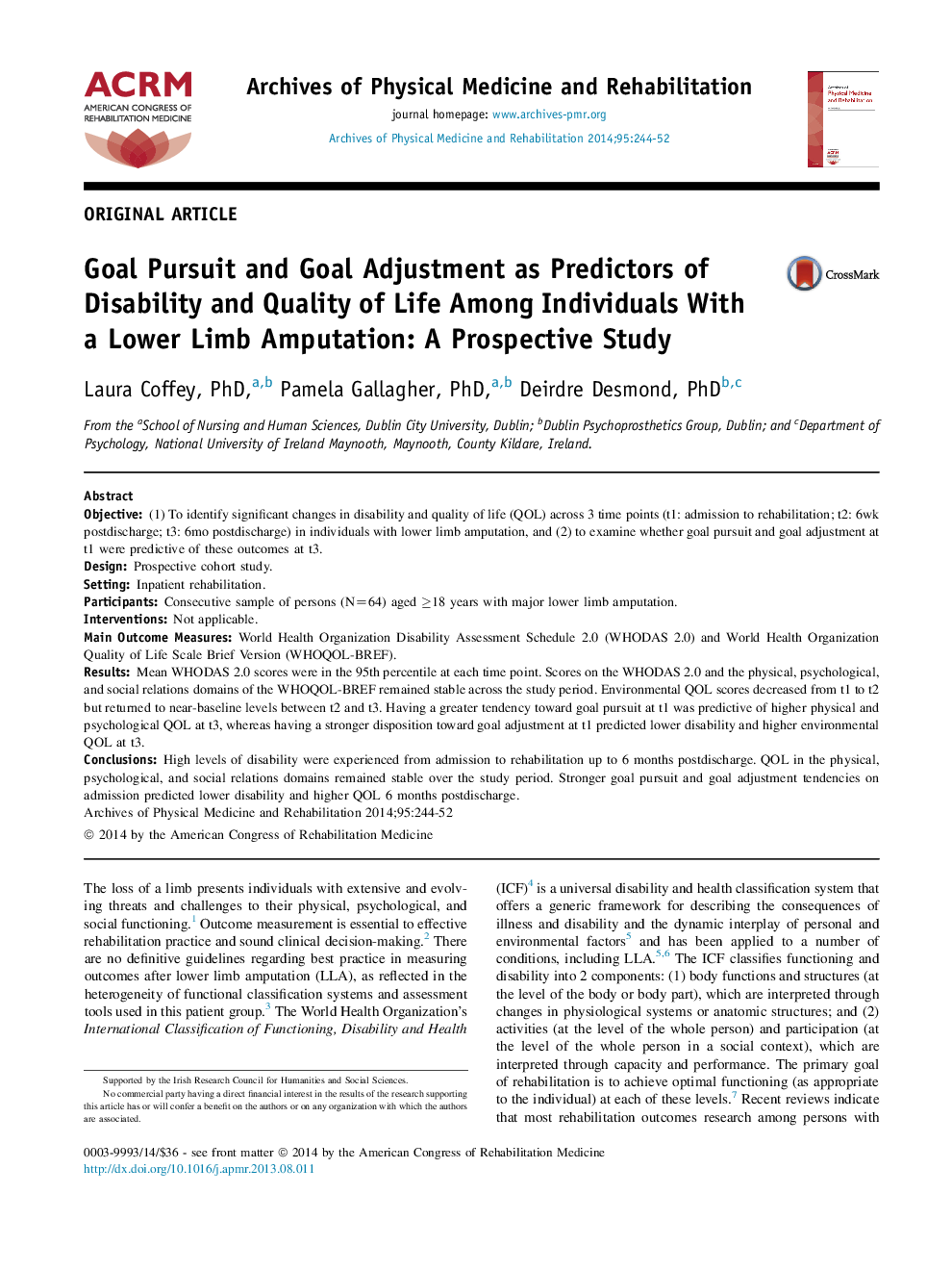| Article ID | Journal | Published Year | Pages | File Type |
|---|---|---|---|---|
| 3449034 | Archives of Physical Medicine and Rehabilitation | 2014 | 9 Pages |
Objective(1) To identify significant changes in disability and quality of life (QOL) across 3 time points (t1: admission to rehabilitation; t2: 6wk postdischarge; t3: 6mo postdischarge) in individuals with lower limb amputation, and (2) to examine whether goal pursuit and goal adjustment at t1 were predictive of these outcomes at t3.DesignProspective cohort study.SettingInpatient rehabilitation.ParticipantsConsecutive sample of persons (N=64) aged ≥18 years with major lower limb amputation.InterventionsNot applicable.Main Outcome MeasuresWorld Health Organization Disability Assessment Schedule 2.0 (WHODAS 2.0) and World Health Organization Quality of Life Scale Brief Version (WHOQOL-BREF).ResultsMean WHODAS 2.0 scores were in the 95th percentile at each time point. Scores on the WHODAS 2.0 and the physical, psychological, and social relations domains of the WHOQOL-BREF remained stable across the study period. Environmental QOL scores decreased from t1 to t2 but returned to near-baseline levels between t2 and t3. Having a greater tendency toward goal pursuit at t1 was predictive of higher physical and psychological QOL at t3, whereas having a stronger disposition toward goal adjustment at t1 predicted lower disability and higher environmental QOL at t3.ConclusionsHigh levels of disability were experienced from admission to rehabilitation up to 6 months postdischarge. QOL in the physical, psychological, and social relations domains remained stable over the study period. Stronger goal pursuit and goal adjustment tendencies on admission predicted lower disability and higher QOL 6 months postdischarge.
